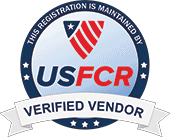With the pandemic in effect, companies in a wide variety of industries already knew that managing a remote workforce can be challenging. How does leadership maintain a strong company culture and keep employees motivated? Regardless of the industry or workforce, the main focus for successful remote work should be communication.
In this post, we’ll look closer at how a solid communication strategy can lead to remote workforce success. Here are the five best practices for building relationships among your remote team.
Embrace technology
One of the easiest ways to bring remote employees together is through the use of technology. Via video chat, text message, or email, there is a multitude of ways to harness the power of the internet to connect with people in different locations. Using what’s called field service management software, utilities can benefit from cloud-based workforce solutions. This software merges disparate systems and files, uniting them into a single platform. Depending on the provider, you’re likely to find an assortment of communication-related modules. Ones that include work order management, customer relationship management, and more.
Related: 5 Reasons Utilities Should Embrace Digital
Be consistent
Most of us drive to work each day without giving it a second thought. Why? It’s our routine, and we’re accustomed to it. The same principle applies to communicating with remote employees. If you are consistent with communication—both in terms of timing and medium—your employees will start to expect it. A good morning text with an inspirational quote, or organizing a weekly all-hands video call are great ways to build rapport with employees.
Related: Top 5 Tips for Maximizing Customer Service Software Training
Emphasize transparency
Communicating openly is the most effective way to earn the respect of your employees, setting them up for success. Be transparent about tough conversations like deadlines and consequences. Don’t be shy about lauding someone for their good work. If your crews are short-staffed, let employees know that you recognize their hard work, and how they’re putting the utility ahead of themselves. Empathy can go a long way.
Related: Core Value # 1: Safety First
Have an open (virtual) door policy
This next tip works in lockstep with transparency. It should be something that leadership and the newest employee should focus on. Utilities should strive to implement a policy that supports risk-free communication. Make sure your employees know that they can go to their supervisor for personal issues and concerns about work. If an employee does come to you with a problem, this is your chance to show them that you value their thoughts and opinions by taking action to rectify what’s wrong.
Related: Project Management: Keeping it Simple
Go to the source for feedback
It’s likely that utility leaders don’t have the same day-to-day responsibilities as most front-line employees. Why not tap into that knowledge by asking your teams about their communication preferences? Not all remote employees work the same schedules or have access to the same technology. Be sure to poll different types of employees about what works for them.
Utility Partners of America has worked with remote employees for decades
As a company that partners with utilities and energy cooperatives, we know the pain points you’re battling in communicating with your remote employees—and we want to help. Utility Partners of America (UPA) offers a variety of offerings, from meter services to inspection and maintenance, and more. To learn more about what we do and how we can guide you in your utility’s communication efforts, contact us today.





